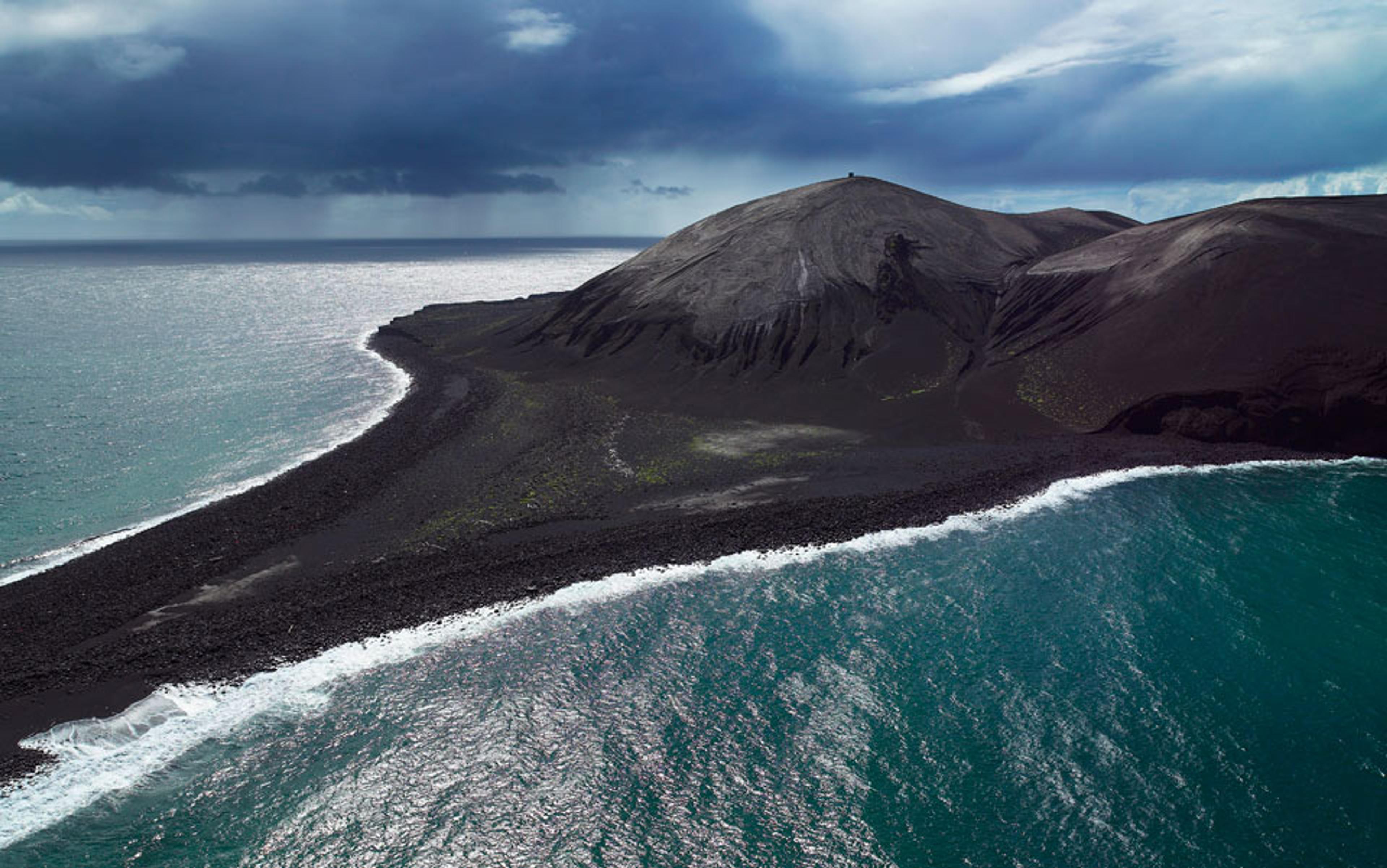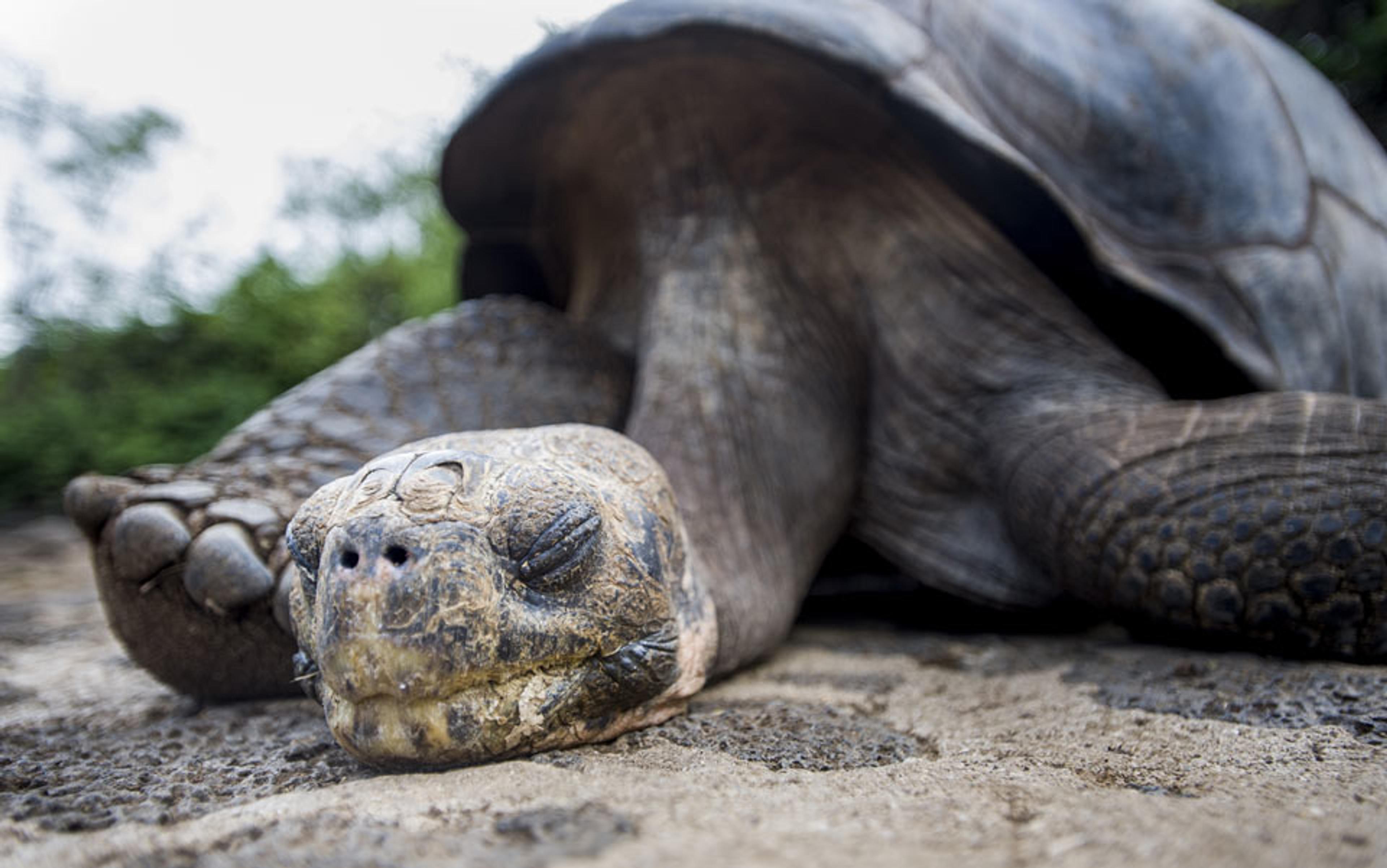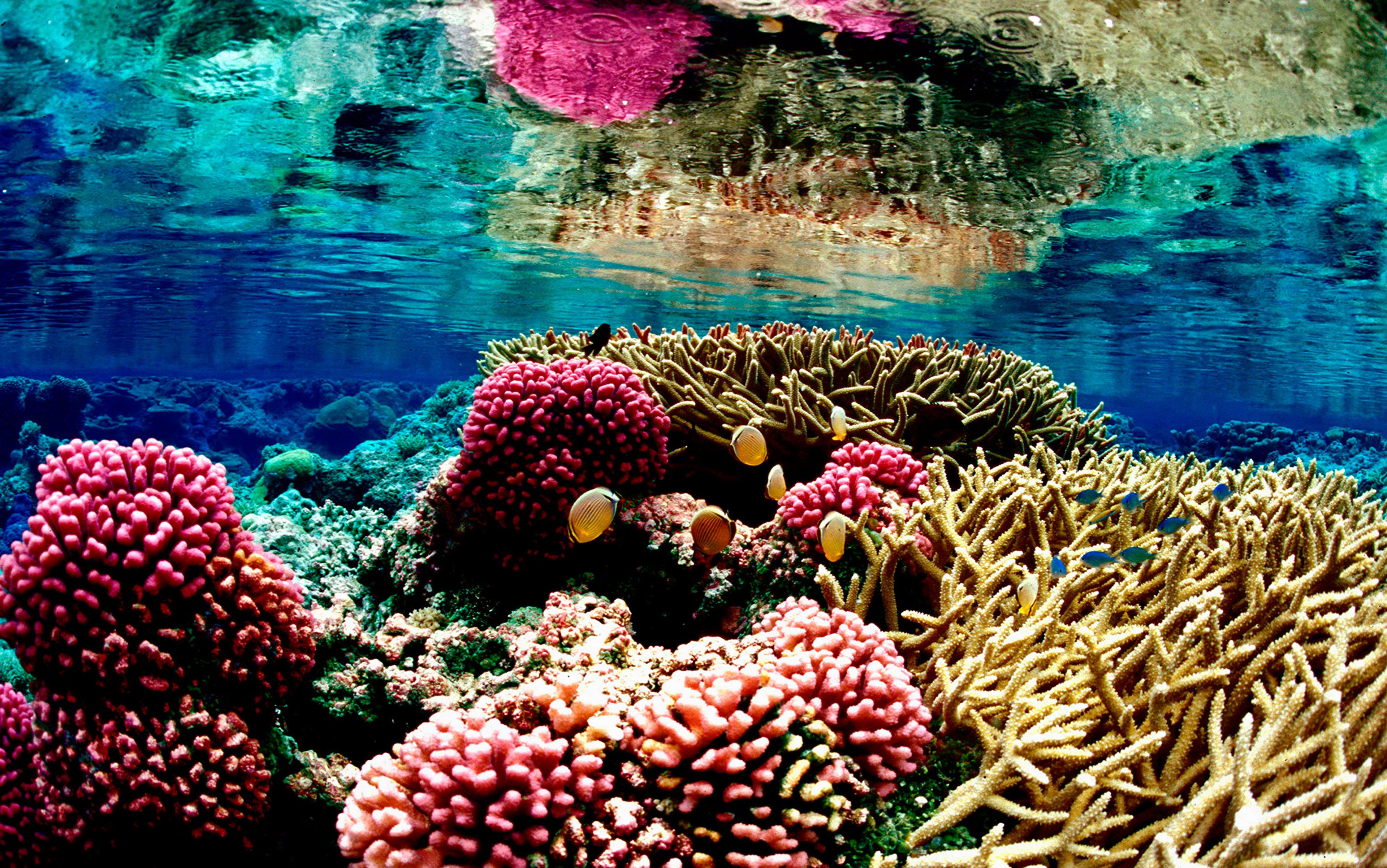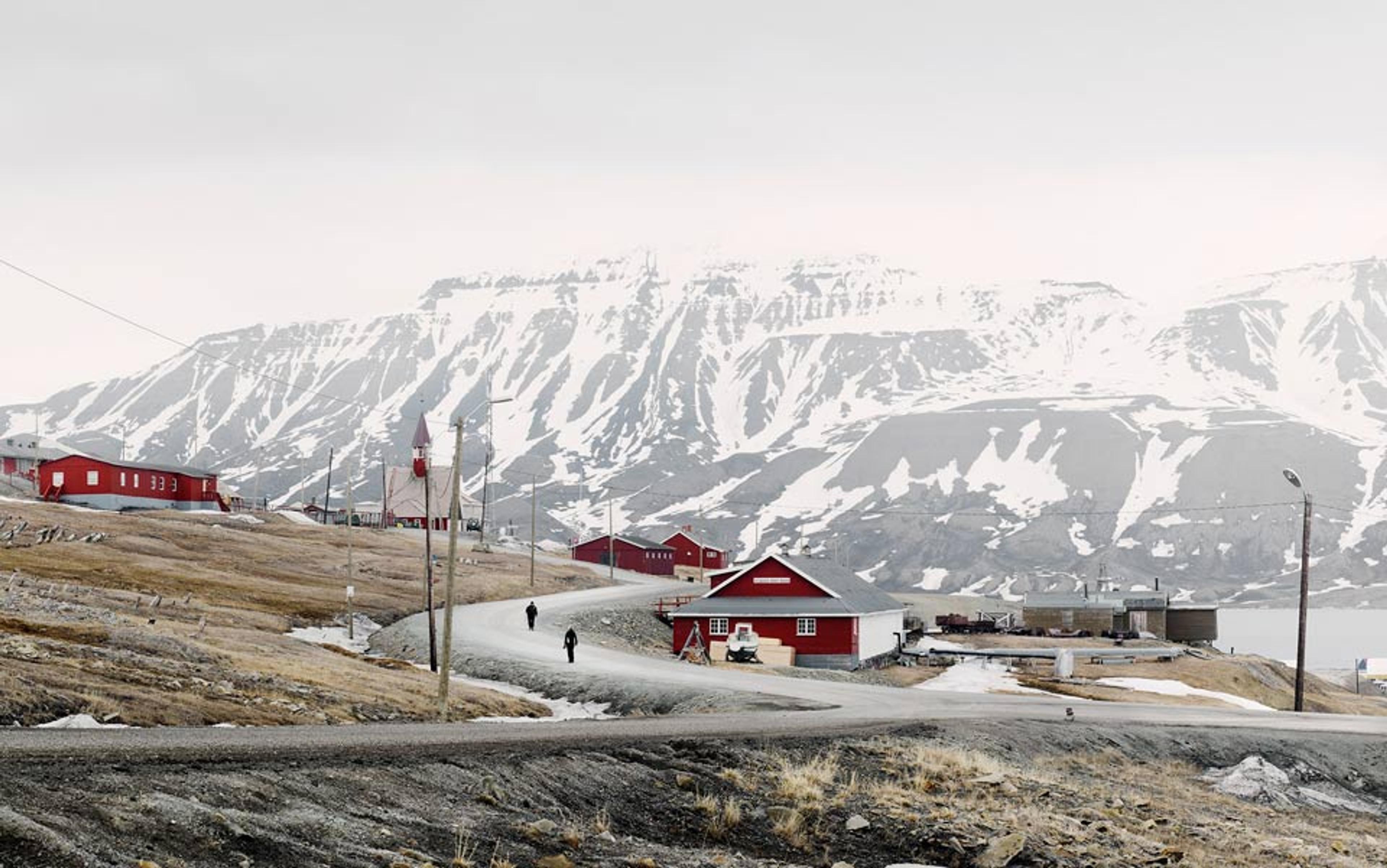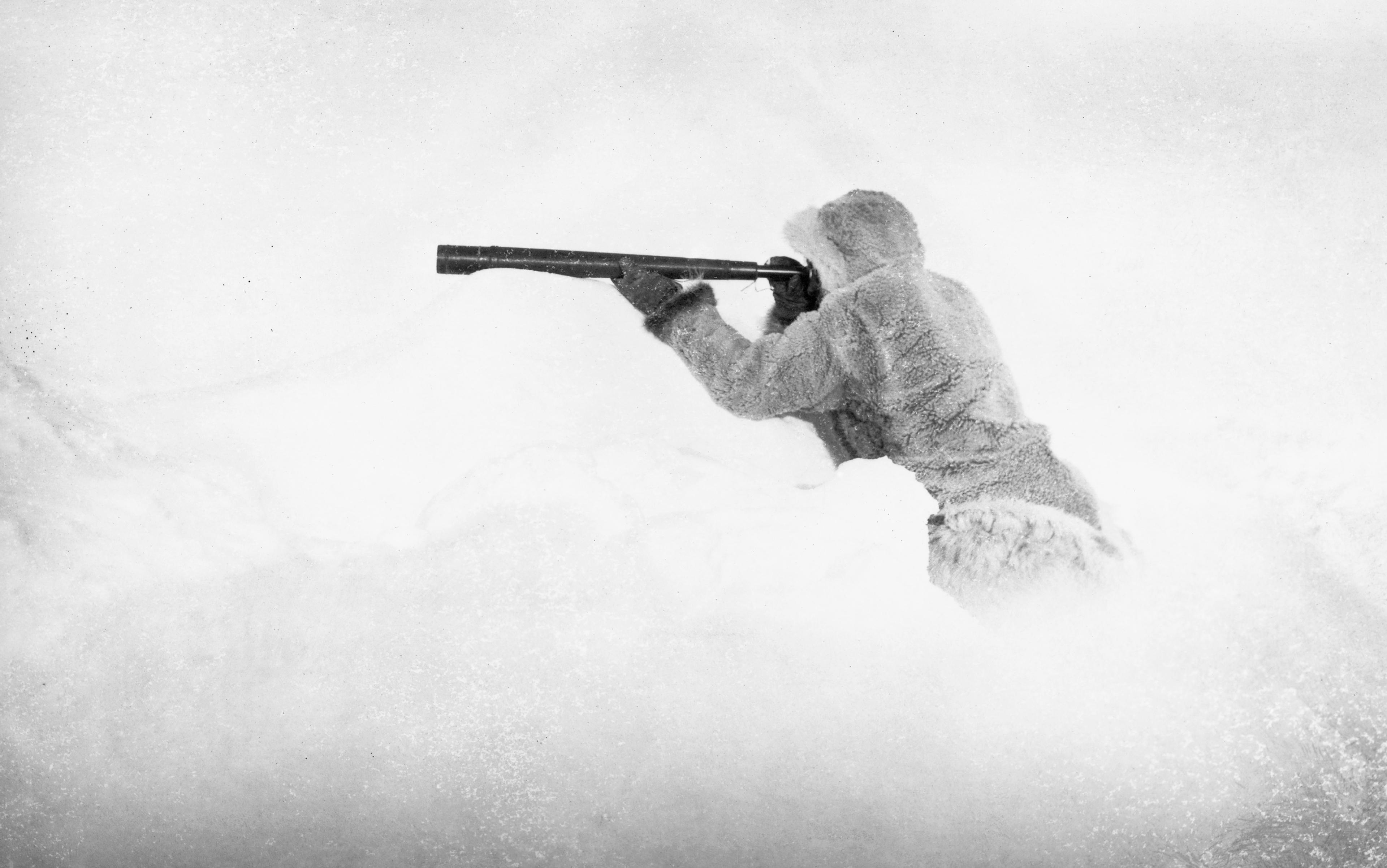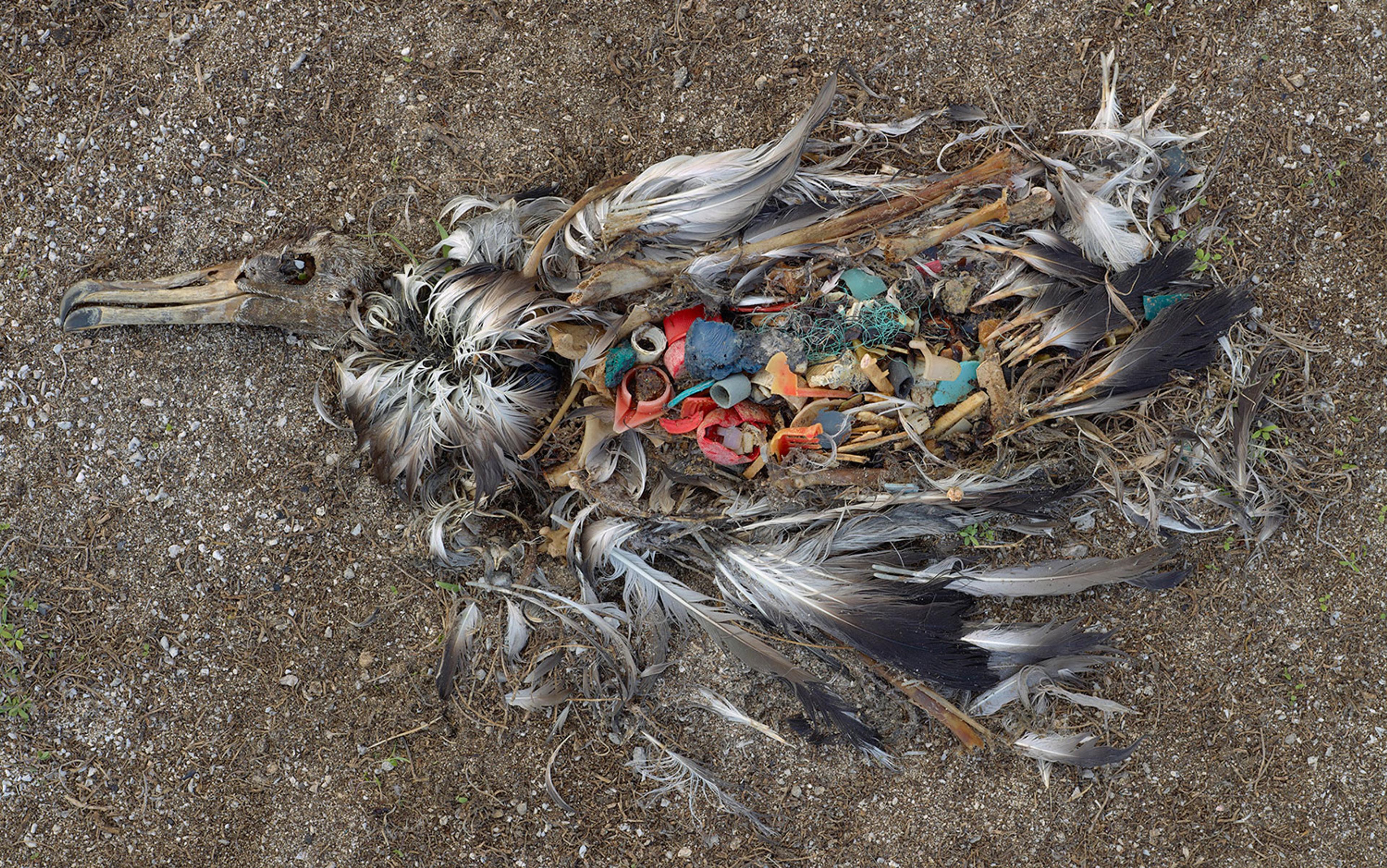An island was born on 14 November 1963. In a luminous memory from my childhood, my father has the newspaper spread over our yellow breakfast table in suburban Melbourne and announces this curious fact. Although far away in Iceland, the idea that an island could have a beginning captivated me. Solid rock transported by a submarine volcano had created new land where once there was just ocean.
Before there was an island, the crew of Ísleifur II, fishing off Geirfuglasker, smelt sulphur. Columns of volcanic matter called tephra leapt from the water to a height of 200 ft at 8am, and by 11am the black column reached 12,000 ft, creating concentric waves. The rock itself erupted from the sea at 3pm. The column of tephra accompanying the rock was visible from Reykjavík, 70 miles away, for many months, shining white in the long daylight and borrowing the dramatic pink glow of sunrise and sunset.
Paris Match magazine paid three intrepid Frenchmen to be the first to walk there. On 6 December, they sped across from the main island of Heimaey to spend 15 minutes on this new bleak, black shore. The Icelandic Place Names Committee named it Surtsey, after the Norse giant Surtr, who according to the creation story Völuspá had come from the South with fire and fought with the god Freyr at Ragnarök just before the end of the world. South was important: Surtsey took Iceland further south than ever before. Local Vestmann Islanders resented the presumption of mainlanders. In ferocious weather on 13 December, a sturdy local party ventured to the island to erect their own sign: Vesturey (West Island). Legend has it that Surtsey ‘reacted violently, pelting the visitors with pumice and mud, so they were lucky to escape without loss of life’. Surtsey survived.
My first island adventures were imaginary travels with Enid Blyton’s Fives and Sevens to rugged Scotland. Islands were adventurous places for humans, but home for wheeling, wailing gannets, fulmars, gulls and kittiwakes. Only later did I discover Robert Louis Stevenson’s tropical island paradises: by then my ‘default’ islands were always black, bleak, cold and windy, like Surtsey, the island born in my own lifetime.
The idea of knowing a place from its origins, and knowing all about a place is compelling. In her Atlas of Remote Islands (2010), the German cartographer Judith Schalansky depicts ‘50 islands I have not visited and never will’, each gorgeously rendered, a topographically shaded landmass on a plain blue page. As the British author Pico Iyer has noted, some islands fall off the map altogether, perhaps especially if, like Paraguay and Bhutan, they are girt by land.
In Australia – the largest island, the smallest continent – we have our own peculiar fascination with island thinking. The ‘nation for a continent’ sometimes overlooks its own islands, even Tasmania. And the continental imagination almost always excludes Christmas Island, Heard Island, Lord Howe Island, Norfolk Island, and Macquarie Island, all beyond our continental shelf. These are the places Australia controls, but sometimes disowns, as asylum seekers in leaky boats discover to their peril.
Australia is so large, it is continental in behaviour. It is so big, it is described as having islands within its landmass
I learned the shape of my nation from the small plastic silhouette of Australia that was in the pencil cases of children in the 1960s and ’70s. Now, as an adult travelling abroad, I have no trouble sketching an outline of my country, an approximation of that plastic stencil, whenever I need to explain where I’m from, or where some event occurred. (I add an ‘apple’ for Tasmania below the bottom right corner). This nation is defined by its coastline. People from land-locked places envy the recognisable shape of my country. They have trouble drawing their own national boundaries, and seldom have a ‘national shape’ in their heads as clear as mine.
Australia is so large as an island that it is continental in behaviour. It is so big that it is sometimes described as having islands within its landmass, particularly in the vast desert interior (70 per cent of the nation is ‘arid zone’). The idea of oases, or islands of biological activity around the waterholes in desert seas, dates back to the writings of the English explorer Edward John Eyre, who ventured inland in 1840. It is echoed in the more recent ecological idea of ‘pulse and reserve’ or ‘boom and bust’ where the island refuges grow and shrink with climatic shifts. In Islands in the Interior (1993), the archaeologist Peter Veth argued that Australia had isolated human populations, cut off from each other over long periods in the super-aridity of the last glacial maximum.
Island-mindedness is born in island places, but the islands of the mind have a broad appeal. Is this hard-wired? Recognising an island of safety and refuge might have enabled our hominin ancestors to find stepping stones out of Africa in times of environmental stress. The concept of the island has long been prominent in literature and useful in science: biologists and geographers, national park managers and archaeologists, linguists, geneticists and evolutionary theorists have all turned at times to the model of the island. Yet it might no longer be a great model for the new needs and concerns of our rapidly globalising century.
In the mid-19th century, both Alfred Russel Wallace and Charles Darwin came to evolutionary theory through encounters with islands. Ideas about the relations between animals and plants, and their genetic and evolutionary trees, are filtered through this island lens. Western sciences see and define the world’s biotas with an oceanic eye. Wallace was fascinated by islands at the most westerly reach of the vast Pacific Ocean, while Darwin concentrated on the Galápagos in the eastern Pacific. In the Galápagos, evolutionary change differentially advantaged for the beak shapes of closely related finches on adjacent islands, according to the food sources that were available.
Wallace was perhaps more geographically attuned: interested, like the Prussian naturalist Alexander von Humboldt before him, in the environmental conditions of living – islands, climates, altitudes, and latitudes – that is the stuff of biogeography. In 1880, Wallace published Island Life, which explored patterns in ‘the phenomena and causes of Insular faunas and floras’ and grappled with ‘the problem of geological climates’. His lifework built on the observation that island animals were often quite distinct from continental groups nearby, and that different sorts of islands made for different biogeographic possibilities.
After travelling from England to Japan and seeing the similarity of the natural world all the way across Eurasia, Wallace was struck by the radical discontinuities of nature between the great islands of Australia and New Zealand. How did such a short ocean trip yield such surprises? New Zealand was utterly different, he declared: ‘Kangaroos and wombats there are none, the birds are almost all entirely new, insects are very scarce and quite unlike the handsome or strange Australian forms, while even the vegetation is all changed, and no gum-tree, or wattle, or grass-tree meets the traveller’s eye.’
In the even shorter distance between Bali and Lombok, a strait of just 15 miles, Wallace discerned differences in biota dramatic enough for him to define ‘Wallace’s Line’, a biogeographical marker of a whole region, Wallacea. Different geological histories resulted in massively different life forms on either side of this line. He had stumbled upon something profound about islands in general, and these islands in particular. They are places revealing Earth’s history: the very soils and climates accelerate and concentrate evolutionary processes.
Wallace’s real fascination was with the more remote ‘oceanic islands’ such as those of the mid-Atlantic rift, far from continents, usually volcanic in origin, ‘new’ and free of the complex layers of history found on larger landmasses. Oceanic islands are truly isolated, both geographically and historically – created not by slow processes such as rising sea levels or subsidence, but in a precise, catastrophic moment. Here life is tough; the species that survived are distinctive, special and few.
A century later, the ecologists Robert MacArthur and Edward O Wilson followed Darwin and Wallace in finding islands good to think with. They turned to a large set of similar small islands in the Florida Keys to consider how life forms are established in simple ecosystems, and to build a way to statistically model comparisons of life forms. ‘An island,’ declared their influential Theory of Island Biogeography (1967), ‘is an intrinsically appealing study object.’ Its scientific appeal is its discreteness. It is clear what populations belong there, and which do not. Islands are also usefully numerous and comparable, unlike continents and oceans. ‘By their very multiplicity, and variation in shape, size, degree of isolation, and ecology, islands provide the necessary replications in natural “experiments” by which evolutionary hypotheses can be tested.’
the island was the basis for mathematical certainty – for laws – in the management of nature
The principles learned in the Florida Keys ‘apply in lesser or greater degree to all natural habitats’, they suggested. The idea of an island could also apply to a stream, a cave, a gallery forest and a tide pool. In the years since 1967, the theory of island biogeography has guided conservationists and landscape architects in designing and managing national parks and nature reserves. These are not islands in the physical ocean, but islands of nature in a sea of human influence.
An island is as much metaphor as it is physical place. Nature and wilderness reserves became the real nature for quantitative biological theorists. They could ignore the complex stuff of urban development and human communities. An island could stand for the Garden of Eden, in an age when wilderness was the highest ideal for conservation.
Islands are also devices for thinking mathematically, for simplifying the real world and leaving out messy variables. MacArthur and Wilson were conscious of the complexity of the processes they wished to explain quantitatively – processes such as dispersal, invasion, competition, adaptation and extinction. An island-based theory, they acknowledged, left out ‘many of the most troublesome – and interesting – problems’. Ecological principles need sound theories and statistical significance if they are going to attract support from governments and policymakers. Ultimately, they argued, islands and continents need to be understood together, but the island was the basis for mathematical certainty – for laws – in the management of nature. Their final chapter, ‘Prospect’, argued that biogeography was mature enough to ‘be reformulated in terms of the first principles of population ecology and genetics’.
Where Wallace and Darwin had sought to understand how nature worked, MacArthur and Wilson developed a theory to ensure the survival of a ‘fragile’ nature in a hostile world. It was a time when space travel offered a new vision of the planet as an island in space, and there was renewed pressure to build science that might save species from extinctions. MacArthur and Wilson wanted to model better re-colonisations and to prevent biological invasions that would limit evolutionary futures. They saw human activity as creating islands of natural worlds amid a ‘matrix’ of human activity. Perhaps what they didn’t see coming was the challenge from within ecology to the idea of equilibrium itself. They assumed that nature unchecked would find balance: an assumption that took a lot of science to shake.
Islands are idealised ecological worlds, the Edens of a fallen planet. While the science of conservation biology has understood island habitats as experimental playgrounds, it has also shown that island faunas and floras are more vulnerable than continental ones.
Lord Howe Island sits in the ocean 486 miles from Sydney. It is isolated from the continental and human history of Australia, beyond the Sahul continental plate. It was one of the last places on Earth to be ‘discovered’, with first human footfall on 13 March 1788. This was bad news for its birds. The providence petrels suffered the greatest shock. Unaccustomed to human predators, they sat on their nests and were easily clubbed to death on the beach. Hence the name: they were ‘providential’ supplies sent by God for those hungry settlers.
The petrels managed to survive the onslaught. Named for St Peter because they ‘walked on water’, petrels spend most of their year at sea, returning to the island only to breed. Some escaped and bred elsewhere, and the population recovered. Not so fortunate were the birds who could not fly at all, who laid eggs on the ground that were vulnerable to the feral goats and sheep introduced in the 19th century, and to black rats that escaped onto the island from the SS Makambo, beached for repair in 1918. Even before the rats, the white gallinule, the white-throated pigeon, the red-crowned parakeet and the Tasman booby were already extinct.
Listing Lord Howe Island as a World Heritage site in 1982 saved the endemic woodhen Tricholimnas sylvestris, the only surviving member of its genus. With only three healthy pairs left – and these living beyond reach of feral animals, on top of rugged Mount Gower (2,871 ft) – it seemed this bird was doomed to extinction. Nevertheless, a team of biologists from the Australian Museum began a captive-breeding programme (simultaneously destroying the island’s entire wild pig population). Woodhen chicks were raised in a breeding centre on the island from 1980, and in January 1984, when the centre closed, 93 chicks had been released. Today, these charming, wide-eyed birds are found all over the island. Baiting for rats still protects their eggs in the wild.
On small islands, it is possible to remove all predators, and create a safe place for highly endangered animals such as the Lord Howe hen or the kakapo, New Zealand’s ground parrot. But this is an expensive approach to conservation and a limited solution to extinction. Nor has an island approach to land-based nature reserves proven sustainable.
Island-based mathematical models were intended to scale up to larger, more complex ‘islands’, the world’s nature reserves. But complexity is chaotic, and complex systems are not merely larger than simple ones. Many ecologists working on long-term, large-scale programmes – for example, the US National Science Foundation’s Long-Term Ecological Research (LTER) in the 1980s – found no equilibrium in nature at all – just more and more chaos. As the evidence for a changing climate amassed, it became clear that reserving fixed land sites, of whatever shape, would not save species from climate fluctuations. By 1990, nature’s music was named Discordant Harmonies by the ecologist and chaos theorist Daniel Botkin.
‘Elegant models made by deified people die hard’
The island had seemed an ideal field for ‘experimentation’, but island biogeography did not take sufficient account of time and history, and the assumption that the island’s ecological future was heading steadily towards some sort of ‘balance’ was misplaced. In 1986, the Finnish philosopher-ecologist Yrjö Haila argued that the equilibrium model had ‘ossified into a simple formula that began to suppress creative thinking instead of stimulating it’.
Haila advocated ‘a broader, pluralistic appreciation of the role of theories in general’. But ecologists have found it difficult to let go of the elegance and parsimony that equilibrium theories embody, and to see the way life works afresh without theoretical assumptions. In 2006, the ornithologist and oceanic island specialist David W Steadman argued: ‘Data that fail to support an ‘elegant’ model are often regarded as noise or the exception that proves the rule. Elegant models made by deified people die hard.’
Wilson’s fame gave the equilibrium theory a longer life than its data supported. The balance of nature was attractive beyond science, and it has a romantic following, particularly among conservationists and nature lovers who support the national parks and ‘wilderness’ ideals. The US Wilderness Act is now 50 years old, and things have moved on during the Great Acceleration of change in the same period.
Even as the theory of island biogeography was gaining supporters, the critique of the balance of nature was gathering pace within ecology. National parks and nature reserves management took for granted that nature could somehow heal itself, if protected from humanity. Experimental ideas about islands drove – and at times limited – the conservation agenda, because managers still indulged the idea that nature could be fenced off, or isolated from the threat of humanity. In the past half-century, during which the human population has more than doubled, theories for protecting nature from our overexploitation have proliferated. Biological extinctions have accelerated unabated.
This century has brought a realisation that human activities affect all the Earth’s systems, from the atmosphere to the oceans, and the idea of nature without humans no longer makes sense. The conservation paradigm of island biogeography has been superseded by a need to manage dynamic ecological systems inside and outside reserves. Porous borders invite ‘invasions’ by outsiders, and the reserves themselves might become problems for their neighbours, for example by fostering a fire-regime that is dangerous to adjacent areas, as the city of Canberra found in 2003, and the city of Melbourne in 2009.
Conservation biologists now look beyond the island reserves to the ecological health of the matrix and to creating nature-friendly corridors through developed spaces. Neglecting the surrounding areas puts biodiversity at risk, argues the Australian ecologist David Lindenmayer. Ecologists, environmental managers and governments need to extend the idea of care of nature beyond parks and conservation zones. Animals do not recognise the boundaries anyway.
For decades, ecologists have used the ‘species area curve’ – the idea that bigger patches will have more species – to plan biodiversity zones. But the surrounding areas always affect outcomes for the success of the biodiversity zones. The space around a national park is not a biological desert: it is the key to the success of the reserve. Animals use both surrounding landscapes and reserves in unexpected ways, and make ecological management more about watching and creating flexible responses to their needs, rather than demanding they follow human assumptions and building these into legislation. The work of the early 20th century Estonian philosopher-biologist Jakob von Uexküll has been recently revisited by ecologists who seek to understand the animal’s distinct sense of the world (Umwelt). My colleague Adrian Manning has used Uexküll’s ideas to explain why Australian lizards favour open grasslands. Lizards are a key species for temperate grasslands, among the country’s most endangered ecosystems.
People are no longer from where they came from. They become citizens of where they wash up
In the ‘post-national’ 21st century, borders are no longer as fixed as national jurisdictional law suggests. Australia has, at times, excised itself from its islands to handle the politics of asylum‑seeking. Would-be migrants, seeking refuge in Australia, are held on offshore islands until their status is legitimated or denied. By this means, successive Australian governments have deprived vulnerable people, including children, of basic human rights. For the sake of domestic political convenience, the nation of the plastic stencil sometimes defines itself without the islands where refugee boats land. The fact that people abandon nations and passports because of global pressures, because of the impossibility of being at home where they were born, is part of what is changing the nature of nations in a global world. People are no longer from where they came from. They become citizens of where they wash up, or the world. Island-mindedness – the separation of places from other places – is no longer an option.
In this global world, it is flows and circulation, rather than land parcels, that are important. Just as Google maps and GPS have become widespread, territoriality is changing. Flows are about land-and-sea-and-sky-and-people – a collective consciousness that is hard to represent on a 2D map or a phone app.
The island-minded idea of nature, separated from culture, has also changed. Some say we are at the ‘end of nature’: there is now a human signature on all the global flows: the biophysical system is also cultural, as the new epoch of the Anthropocene is imagined. To rework the poet John Dunne, no island-nation is ‘entire of itself’, nor can any island-nature be other than ‘involved in mankind’. Perhaps the bell now tolls for the last island: the blue marble of planet Earth, an island in the infinity of space.
Nearly a third of the lava recently produced on Earth has come from the volcanic belt of Iceland, an area of 13,500 m2 containing about 200 volcanoes active since the last glacial maximum. Thirty volcanic eruptions since 900 AD have been documented in Iceland’s historic sagas, occurring on average every five years over the past millennium, then subsiding again, deep into the dark Atlantic Ocean rift between the continental plates that carry Europe and North America.
None of the islands created by offshore eruptions in 1211, 1422 and 1783 survived. Yet the island born in 1963 continued to grow for four years, reaching a full square mile by 5 June 1967. Since then, winds and waves have eroded it to half that size, but it is still there.
The first life of an island has to fly in
When I finally visited Iceland, I found I could not arrange a trip to Surtsey. It was proclaimed a World Heritage natural area by UNESCO on 8 July 2008, just as I came to pay my respects. Like the Galápagos and Lord Howe, Surtsey was protected for its ‘pristine natural’ values. Its geological history was also part of its case for nomination. Only an island born in 1963 could be ‘protected from birth’ as a scientific laboratory free from human interference (provided UNESCO was prepared to overlook the opportunistic visits of French journalists and Vestmann Islanders within a month of its emergence). From the start, scientists protected it as a place where ‘colonisation by plants and animals, biotic succession and the shaping of geological formations’ were as natural as possible. They declared that ‘human disruption will be minimised’ in this new island, whose purpose was defined by science at exactly the time that MacArthur and Wilson’s theory was new and influential.
Surtsey’s natural heritage is celebrated in a small museum on Iceland’s mainland where I spent some hours in compensation for not visiting the real thing. This is a museum of island-mindedness. From the start, naturalists had been watching the young island for signs of life. Just six months after Surtsey’s first eruption, the Icelandic ecologist Sturla Friðriksson found ‘considerable numbers of microbes of various kinds hovering over the island’. By the summer of 1964, there were flies and butterflies. On this bleak, black rock, life began not with vegetation, but with animals, especially migratory birds including dunlins, phalaropes, plovers, oystercatchers and guillemots. There was even a hopeful pair of ravens, who after several months in early 1965 despaired of nesting. Presumably, they fed on the flies and other microbes, but were ultimately defeated by the winds and storms. Corvids (crows and ravens) are prominent island-birds all the way from Alaska to Hawai’i, celebrated by indigenous peoples.
In Surtsey, it was the kittiwakes who took the title of the island’s ‘first’ indigenous animals, nesting there from June 1965. Those pioneering individuals were, as the Icelandic geologist Sigurður Þórarinsson noted, ‘older than the island itself’. The droppings of sea-birds created the nutrients for plants, even before there was soil. Guano carried seeds and fertilised some wind-borne species, and nourished the establishing plants. The first life of an island has to fly in. Hardy cosmopolitan plants eventually followed the birds.
Surtsey is still bleak and black, but mosses and lichens, windswept grasses and stunted shrubs now soften its edges. All its creatures still live as much with the global systems of winds and storms as on the precious fragment of land that erupted 50 years ago. Surviving on such a remote island is, paradoxically, a mark of cosmopolitanism. Only plants and animals that travel easily will flourish there.
